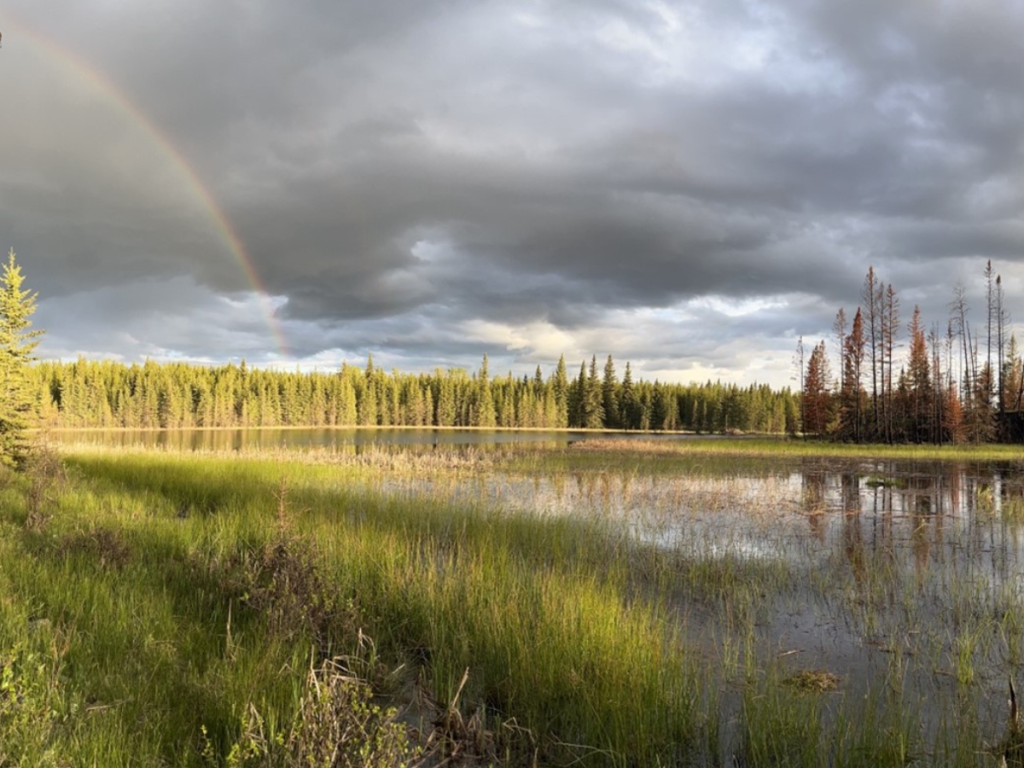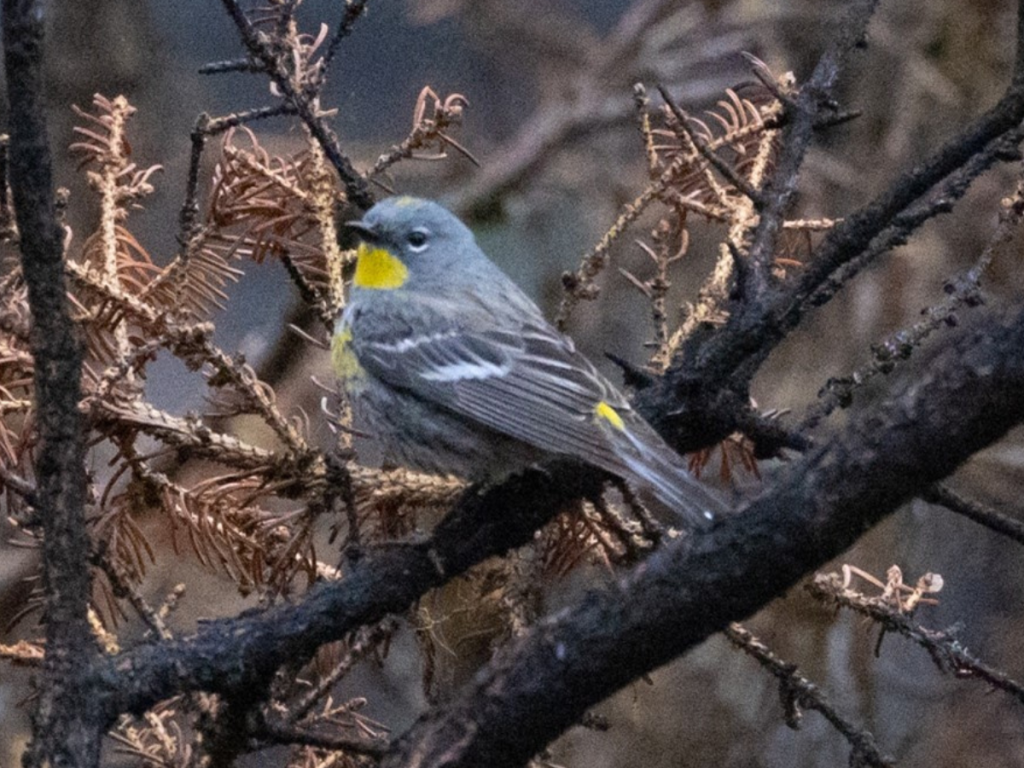The Flat Lake Fire – One Year Later
Categories:
Guest blog by John D. Reynolds (iNaturalist lead from Simon Fraser University). John visited Flat Lake in late summer 2022 and observed significant impacts from recent wildfire impacts.
In August 2021, a wildfire burned much of Flat Lake Park, located 27 km southwest of 100 Mile House. Flat Lake features a mosaic of lakes popular with canoeists and campers. As luck would have it, the team from the BC Parks iNaturalist Program had visited the park the summer before the fire, and Brian Starzomski, fellow iNaturalist lead with University of Victoria, was able to follow up with a visit in 2022, the summer after the fire. What we found was amazing.

As we drove into the park, we saw a mosaic of burned and unburned areas. The burned areas were as expected: a striking landscape of standing and fallen charred trees, with just a few patches of greenery sprouting from shrubs that had burned to the ground. But the ground itself was interesting, because in many places the top 10-30 cm of soil was gone. This was not due to erosion; it was due to the fire having burned down through the organic layer. That left many large conifers with roots perched precariously over burned-out depressions. Clearly, these trees will continue to fall over the coming years.

Brian and I were also struck by huge numbers of morels. These fungi are famous for their ability to spring up after forest fires, and we saw hundreds in just a few hours. Another striking fungus was the well-named Stalked Bonfire Cup. As its name suggests, this cup fungus flourishes after burns. Before our visit, there were just 44 observations of this species in all of Canada. Brian and I uploaded 32 more observations to iNaturalist in a day and a half, and we could have uploaded thousands! We did not see either of these species the year before the fire. Another surprise was the abundance of the aptly named Common Liverwort. We had never seen so many. Their bright green rosettes were particularly prominent growing on the charcoal around the rims of stumps at ground level. We may have gotten a little carried away photographing them, as this species now has the most observations of any species in the park.
We saw or heard 46 species of birds in the day and a half that we were there. Our visit the year before the fire was only a brief stop, so we can’t compare bird life pre vs post fire. But many species were very prominent in the charred forests, including Swainson’s Thrushes and Yellow-rumped Warblers, which sang and foraged as if nothing had happened. We also saw a Black-backed Woodpecker, a species that is often prominent in burned forests because they capitalize on the larvae of beetles that live in dead trees.

We hope to return to Flat Lake Park soon with our BC Parks iNaturalist team to do further explorations on the progress of recovery two years after the fire. With support from the BC Parks Licence Plate Program and the Sitka Foundation, we have hired six students who will be doing biodiversity surveys in provincial parks and other protected areas across the province. All our observations in all parks can be found on here. Observations for Flat Lake Park are here. We encourage everyone to contribute to this effort to discover species in our provincial parks by uploading photos and audios to iNaturalist. They will automatically appear in whatever park you were in, thus providing valuable information to biologists and conservationists on the biodiversity of B.C.
The BC Parks iNaturalist project was initiated by researchers from the University of Victoria and Simon Fraser University with support from the Living Lab Program, Licence Plate Program funding, and the BC Parks Foundation. The goal of the project is to increase biodiversity knowledge within the province’s parks and protected area system. Anyone from across the province can submit observations.




